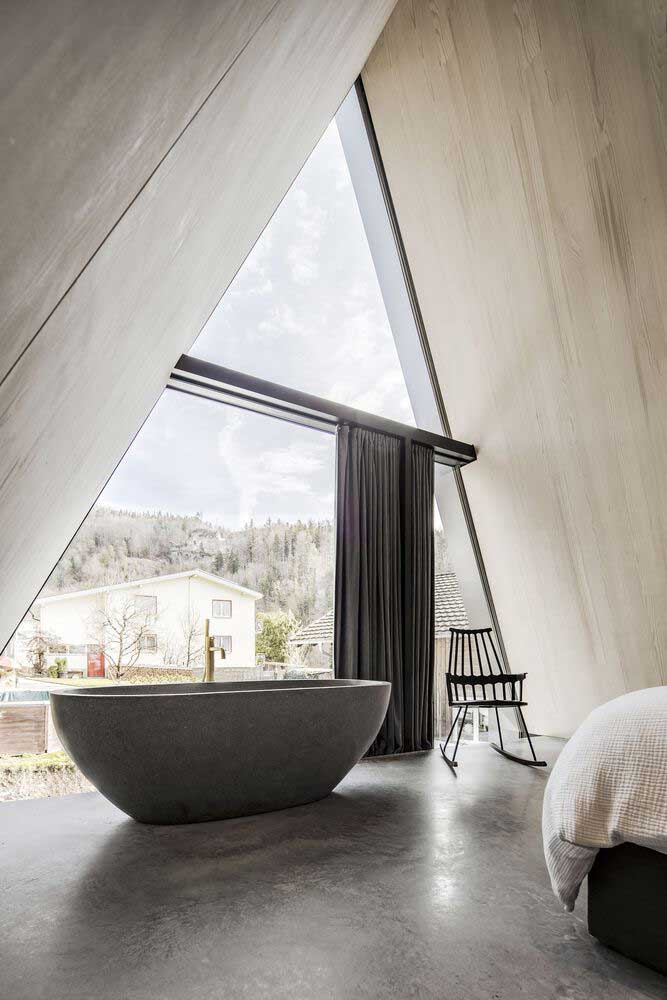In the world of interior design, geometric shapes and clean lines have long been celebrated for their ability to create a sophisticated and contemporary aesthetic. This design philosophy, rooted in the principles of simplicity and order, brings a sense of calm and elegance to any space. Through the clever use of building materials such as glass, concrete, steel, and natural elements, designers craft interiors that are both functional and visually striking. This essay delves into the art of using these materials to achieve a harmonious balance of form and function, ultimately creating interiors that exude sophistication and style.






| Architects | http://www.sebastian-buescher.de |
| Images | http://albrecht-schnabel.com/ |
The Elegance of Glass
Glass has become an indispensable material in modern interior design, particularly when it comes to creating spaces with geometric shapes and clean lines. The transparency and reflective qualities of glass make it an ideal choice for maximizing natural light and creating a sense of openness. Large glass panels, whether used as windows or room dividers, help to blur the boundaries between indoor and outdoor spaces, fostering a seamless flow that enhances the overall aesthetic.
Incorporating glass elements such as minimalist glass tables or shelving units can also add a touch of elegance to any room. These pieces often feature sharp, geometric lines that contribute to a clean and uncluttered look. Moreover, glass is highly versatile and can be combined with other materials like metal or wood to create a balanced and cohesive design. The use of frosted or tinted glass can introduce an additional layer of texture and privacy while maintaining the sophisticated feel of the space.






Concrete: The Modern Classic
Concrete, once relegated to industrial uses, has found its place in the realm of sophisticated interior design. Its raw, unpolished texture adds a modern, edgy appeal to interiors while its versatility allows for a variety of geometric applications. Concrete floors, walls, and countertops provide a neutral canvas that can be easily complemented by other design elements, creating a cohesive and harmonious space.
The appeal of concrete lies in its ability to be molded into various shapes and forms. This makes it an excellent choice for creating custom furniture pieces or architectural features that adhere to the principles of geometric design. Concrete’s natural gray hue also pairs well with a wide range of colors and materials, enhancing the overall aesthetic of the interior. When polished or sealed, concrete surfaces can exude a subtle sheen that adds to the sophistication of the space.



The Strength of Steel
Steel is a key player in the world of modern, sophisticated interiors, known for its strength and sleek appearance. Its clean, metallic finish complements the geometric design ethos, making it a popular choice for structural elements, furniture, and decorative accents. The use of steel beams or columns can add a sense of industrial chic to an interior while providing the necessary support for open-plan layouts.
In furniture design, steel is often used to create sharp, angular forms that epitomize the clean lines associated with contemporary aesthetics. Steel-framed chairs, tables, and shelving units not only offer durability but also contribute to a minimalist look that is both functional and stylish. Additionally, steel can be paired with other materials such as wood or glass to soften its appearance and create a more balanced and inviting space.



Natural Elements: A Harmonious Contrast
Incorporating natural elements into a design that emphasizes geometric shapes and clean lines can create a harmonious contrast that enhances the overall sophistication of the interior. Materials such as wood, stone, and plants introduce organic textures and warmth, balancing the starkness of geometric forms and industrial materials. This blend of natural and man-made elements creates a dynamic and inviting environment.
Wood, in particular, is a versatile material that can be used in a variety of ways to complement geometric designs. From hardwood floors to wooden furniture with sleek, linear profiles, wood adds a touch of warmth and natural beauty to any space. Stone, whether in the form of countertops, accent walls, or flooring, brings a sense of timeless elegance and durability. The addition of plants introduces a living element that not only enhances the aesthetic but also improves the air quality and overall ambiance of the interior.


The use of geometric shapes and clean lines in interior design is a testament to the power of simplicity and order. By incorporating materials such as glass, concrete, steel, and natural elements, designers can create spaces that are both sophisticated and functional. These materials, each with their unique qualities, contribute to a cohesive and harmonious design that exudes elegance and modernity. The interplay between sharp lines and organic textures, between transparency and solidity, creates interiors that are not only visually striking but also deeply inspiring.












